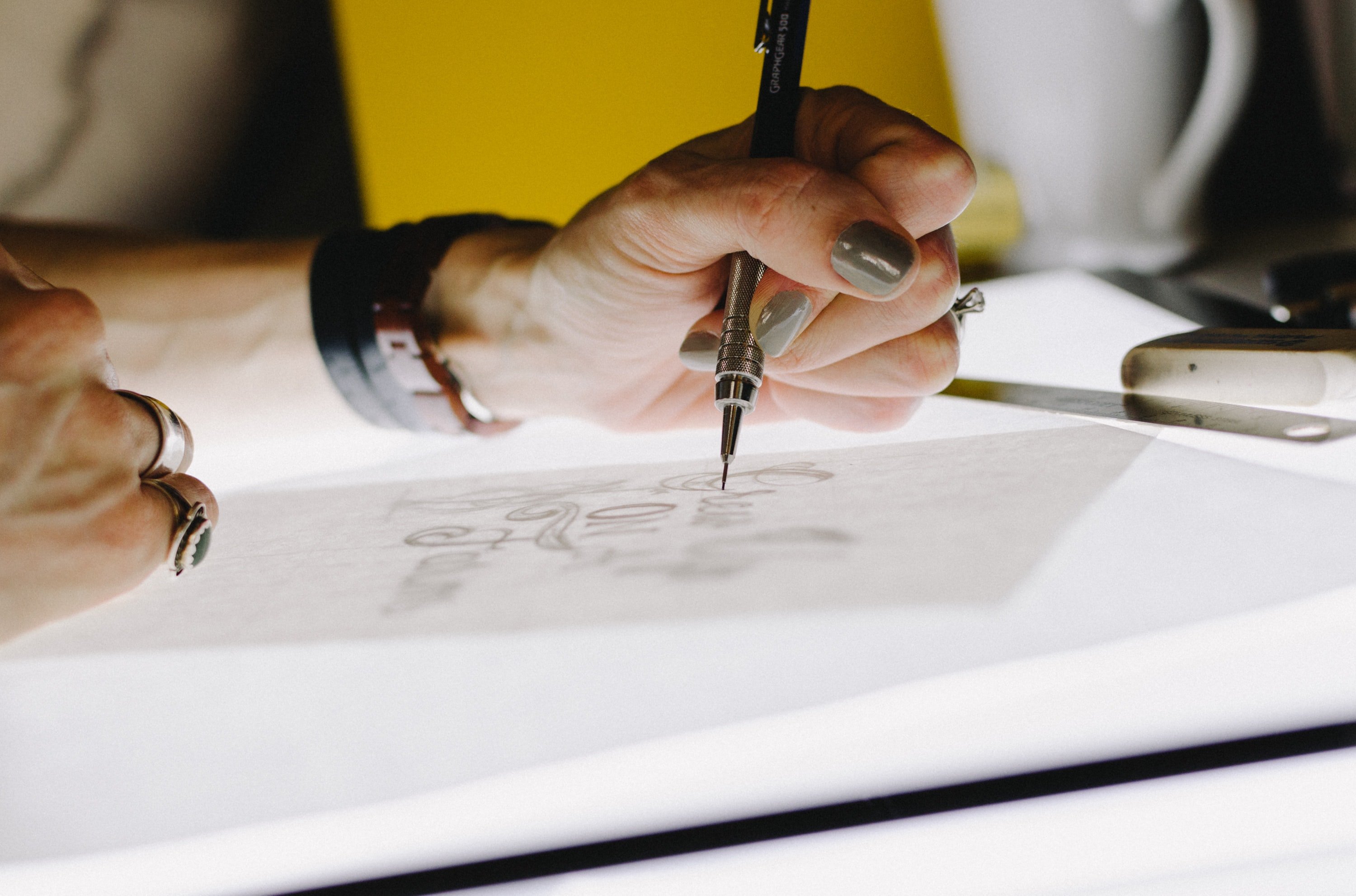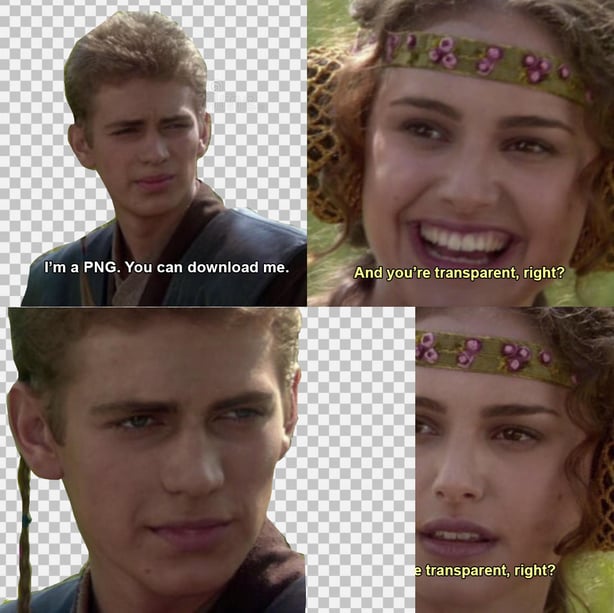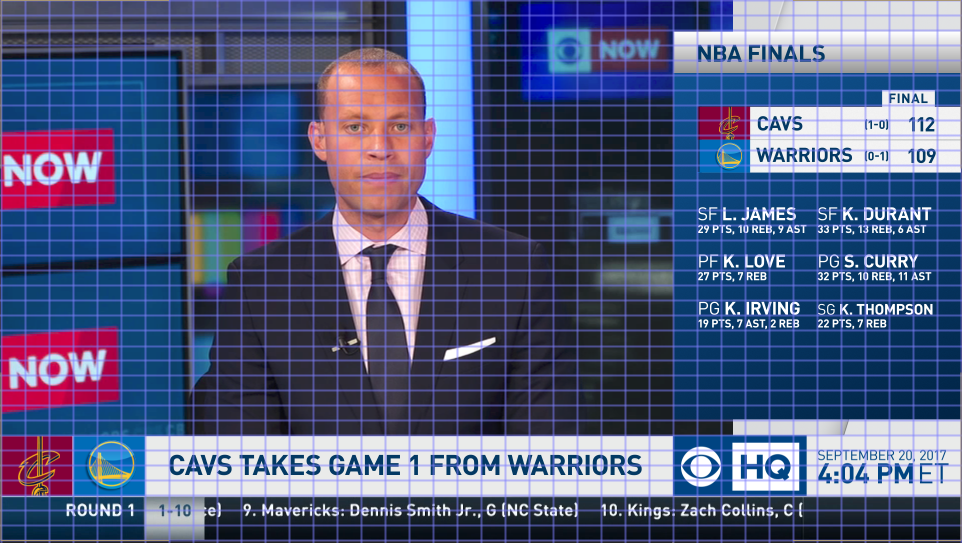
Elevation Glossary of Creative Terms
Written by Elevation
The creative industry is loaded with acronyms, sayings, phrases, and words that can seem a bit confusing if you're not familiar with them. We thought it'd be helpful to our fellow creatives if we compiled those terms into one place. We'll be consistently updating this post as we think of things to add.
2D animation
A 2D animation is comprised of only height and width, meaning the characters of the animation are only 2 dimensional.
Here is a project we completed for Shiseido Americas that is comprised of 2D animation using iconography, typography, and seamless transitions to tell the story of their sustainability efforts as a company.
3D animation
In 3D animation, characters are made up of height, width, and depth, which creates a more realistic contrast compared to 2D animation.
360 campaign
The term "360 campaign" has become somewhat of a buzzword in our industry. To us a 360 campaign is a creative concept that spans the gamut of uses and reaches customers at all points of contact (i.e broadcast, social, web, etc.)
Alpha Channel
A layer that is void of content, so a new layer of content will show through beneath it. PNGs will typically allow for an alpha channel that creates a transparent layer behind an image or graphic that “fills” the rest of the space. Quicktime MOVs also have this same capability in some instances.

Ambisonics
The method of recording and reproducing sounds in 360.
AR
Augmented reality - interactive experience where real-world meets computer generated elements.
Back end
The “under the hood” part of the website or web service that makes it run and is typically not visible to the user interacting with the site or service.
Billboard
A short ad piece, usually no more than :10-:15 seconds in length, that identifies a sponsor for a show or network.
Brand audit
A brand audit is a deep dive into the history of the company and the history of the brand.
Brand identity
Brand identity, or brand ID, is comprised of all the visual elements that make up a brand's appearance. This includes logo, color palette, typography, graphics, physical packaging, and more. Brand ID tells audience members and customers what a company does, and it helps distinguish them from their competitors.
A strong brand identity will tell a cohesive story everywhere a brand exists. Broadcast spots, digital content, live events, specialized activations, websites, print, and any materials both external and internal are a chance to showcase and reinforce brand ID.
Brand promotion
A brand promotion can be any medium of advertisement through social media, tv, web, etc. that promotes a brand, whether that is a single product of that brand or the entire brand itself.
Often times we work with either a network or agency to develop the promotion and they work directly with the brand. Here's an example of a brand promotion piece we did with ABC and Toyota.
Bug
An insect… but also a graphic element that appears on screen (similar to a watermark) that calls out the network, station or channel the content is being provided by. Often times they live on the bottom of the screen, but this can vary (as well as whether or not they exist on the left or right). Typically, however, it always exists in the same screen real estate throughout the programming. If you read the description of a “Grid” below, you can understand why allocating space for various elements like this is so important to lock down at the start of a project to avoid any graphic overlaps.
Fun fact… this is often referred to as a DOG in the UK and New Zealand (short for Digital On-Screen Graphic).... so an insect… but also a mammal.
Bumps / Bumpers
Broadcasting term also referred to as a commercial bumper or ident bumper, these are short identity announcements placed between a pause in a program and its commercial break. They typically involve a logo or some sort of brand mark.
Cinemagraph
Also called “living photographs,” cinemagraphs are stills in which minor and repeated movements occur, usually with the end goal being a perfectly loopable (no obvious break) motion. The most common format are gifs. These are popular on websites, emails and social media content.
Collision detection
The capability of 3D objects to detect the boundaries of each other and interact accordingly.
Composite
Creating a cohesive composition by combining render passes or additional media/images and/or adjustments layers with composting software (we primarily use After Effects for this).
Concepting
Concepting is the stage in design development where we take our ideas and develop them into initial concepts.
Content curation
The process social media sites use to gather and present content that are relevant to a specific topic or a user’s area of interest.
Digital Native
Someone immersed in the internet from an early age (Gen-Z).
Dollhouse view
A zoomed out, usually top-down view of a given 3D space or structure from the outside.
Emergent narrative
The narrative in which a computer-controlled character has a full autonomy in a game.
Evergreen
As the name suggests, something that can live on throughout the year (or beyond). This term comes up a lot for broadcast spots and are a good way to ensure a piece of creative can live beyond a specific call to action. Often times, it takes a simple VO and endcard change to achieve this. If you’re working on a piece for a client that has an intent (Ex. something with a tune-in date or anything with “new” in the graphics/VO), it never hurts to ask up front if they need an Evergreen version. This is double the bang for the buck for the client, it allows your hard work to have a longer shelf life, it mitigates any surprise VO pick-ups and it shows you care and look ahead. #evergreenadvice
Extended reality (XR)
The environments that permit the interaction of computers and people and enable the appearance of mixed reality, virtual reality, and augmented reality.
Eyes tracking
Recognition of the eyes movement for the integration of the user’s experience with a virtual environment.
Field of view (FOV)
The perspective which is available to a viewer. Normal human view is 200 degrees but in VR users can observe the reality in 360.
Four P's
Key factors found in marketing - price, product, promotion, and place.
Frame Rate
A video is nothing more than a rapid sequence of still images. Frame rate refers to the speed at which those still images (frames) move through the sequence.
Front end
The parts of a website that can be seen and interacted with by users.
Futurecasting
A brainstorming technique used to try to predict future possibilities.
Gaze-based interaction
Interactions between user and the VR content where the content is directly impacted by the users gaze.
Grid
A framework of vertical, horizontal, and/or angular lines by which a designer or artist can organize graphic elements.
Whenever we’re working on a network rebrand or any sort of project that involves multiple pieces of information / elements on screen at once, we always create a grid first to be sure we account for the space every element will need, in addition to ensuring consistency in placements throughout their uses. It seems like a boring thing to present a client in the early stages of a creative, but doing so can mitigate major potential design pitfalls down the road. Additionally, it holds your deliverables list accountable from the very beginning of a project. We LOVE grids!

Guerrilla marketing
A marketing approach that uses nontraditional methods and touch-points.
Haptic Suit
A wearable device that provides users with tactile feedback in VR.
Heads and tails
The beginning and end of a clip or sequence.
Head tracking
Recognition of head movements of a user for updating a display to the user’s POV and preserving a stable level of emotional experience.
Heatmap
An analytical tool used to show what a user is looking at within a VR experience, graphical interface, etc.
HMD (head-mounted display)
Any headset used to experience virtual or mixed reality.
Hotspots
Spots that permit revealing addition augmented reality content.
Hybrid app
Applications that will work on different platforms (computers, mobile devices, tablets) and are a combination of a native map and a web app.
ID
A visual/graphic representation of the identity of a brand/network. Often, these are short pieces :05 - :10 that play between programming breaks and showcase the logo or brand mark.
Ideation
Ideation is really our brain dump of ideas. This is a fun process where we reference material that inspires us and create mood boards for client projects. In this stage no ideas are "off limits" as we work to generate a running list.
Immersion
The feeling of disappearance of self and total merge with a virtual avatar. This can include tactical immersion, strategic immersion, and emotional immersion.
Integrated Campaign
Similar to a 360 Campaign but focused on the use of every element of media marketing with the main goal of converting viewers into customers.
Interaction design
Creating meaningful relationships between people and the products, services, or technologies they use.
Interstitial
Short-form programming or a “wrap-around” content which is shown between movies, shows or other events. A good example of this is an interview with the cast of the show you’re watching or light advertising material in the form of short, self-contained content.
On the web, it’s sometimes referred to as “in-streaming advertising.”
Latency
The delay between action in VR and the reaction that follows.
Lorum Ipsum
Placeholder text.
Lower Thirds
Graphics that introduce a person or place typically placed in the lower third of the screen.
Meme
A thought, belief, or behavior that reproduces and goes viral through a culture.
Menu
Short-form programming used by networks to show what's playing at certain times on their platform. Usually lists at least one time slot.
Mixed reality (MR)
“Hybrid reality,” any technology that isn’t a fully immersive VR system but instead AR.
Modeling
Using 3D software to manipulate points in virtual space to form a mesh: a collection of vertices that form a 3D object.
Mood board
Collections of content used to represent the visual style of a website or any creative project.
Mortise
A hole, frame or container for video versus using fullscreen content.
Motion tracking
The technology that permits a user to engage and interact with the virtual world.
Native apps
Made specifically for certain platforms.
Online edit versus Offline edit
Nothing to do with the internet :) An offline edit is usually a first rough pass of the editorial process (often with proxy or low-quality copies of the raw material). This is used to get the nitty gritty of a timing edit approved before heavier material is introduced. An online edit is where the beautification, upres’ing and sometimes graphics, color correction and/or compositing comes in.
Orphans/Widows
When talking in terms of typography, a single word or very short line that appears at the end of a paragraph or the beginning of a column or page, separated from the rest of the text.
Parallax
The perceived movements of objects when the viewer movies.
Rebrand
A rebrand is a very personal process. But something that can be so fun to undergo as a company and brand! A rebrand is when you revamp the logo, colors, or brand imagery, and sometimes but not always, includes a name change.
In 2019, Elevation won #1 rebrand from Promax Entertainment Group for the design work we did on the Escape package. Learn more about that project in the case study here.
Responsive web design
The practice of designing websites so that they adapt gracefully to different-sized devices like phones, tablets, wearable devices, etc.
Reticle
A visual marker representing the user’s gaze in a 3D environment.
Rich media
Interactive media such as quizzes, games, and ads with video and special effects.
Rigging
A “bone-structure” for a 3D model.
Room-scale
A VR set-up that allows the user to physically roam around an entire room without experiencing limitations.
Shelf impact
The ability of a shelf product to grab attention by its design.
Skeuomorphism
When a digital element is designed to look like a replica of the physical work.
Snipe
A type of bird…. but also… a graphic element in broadcast (or sometimes streaming) content which usually appears in the corner of the frame to alert the viewer to a bit of other information, like a programming date for another show or a call to action.
Sting
Similar to an ID in that it is a visual/graphic representation of the identity of a brand/network. Often, these are short pieces :05-:10 that play between programming breaks and showcase the logo or brand mark. A sting tends to have a shorter build and longer hold on the logo/brandmark than an ID.
Stop motion
Stop motion is a technique in which objects are physically manipulated in small increments between individually photographed frames so that they will appear as independent motion or change when the series of frames is played back. This can be accomplished in live action photography or through animated graphics.
Here's an example of a stop motion piece we did with Disney and Babybel that utilized styled food photography shots with animated overlays.
Styleguide
A “manual of style” which informs that a brand or campaign stays consistent in its look and use. These often outline details and best practices for fonts, color, sizes, logo treatments, etc.
Check out the styleguide we created for Escape in the case study here.
Toolkit
A toolkit is what we deliver when everything is finalized and completed for a project. What's included in the project sometimes varies but it typically includes native files with editable templates so in-house teams can easily make edits.
Check out our post, 'The Elevation Guide to best practices for After Effects Toolkits'
Transition
A graphic used to connect content together. A transition typically includes an alpha channel at the head and tail for seamless integration.
Upfront
An Upfront in the television industry is a gathering hosted by networks at the start of an advertising period to sell airtime literally "upfront" or several months before the season begins. Typically these are large events held in person in NYC, however, due to the current events of the pandemic, many have switched to virtual formats.
User experience (UX)
The emotions, attitudes, and ease-of-use a person has when using a product or service.
User-Generated content (UCG)
Content created by users about a brand or product and not by companies or organizations themselves.
User interface (UI)
The design of applications for computers, mobile devices and other devices to maximize the usability and the user experience.
Vector
A computer graphic made up of points, lines and curves, versus color square pixels. This format allows you to resize the graphic without any deterioration, which can be crucial for logos or brand marks. Always ask for (or provide) a vector file to avoid any loss of quality when working with an important graphic mark.
VR
Virtual Reality - simulated environment.
Take these terms into action with visual storytelling. Learn more here.
Topics: visual storytelling

